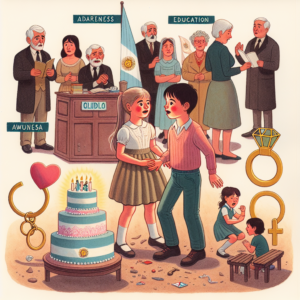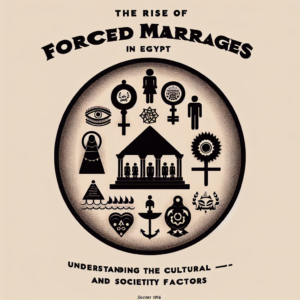#ChildMarriage #EndChildMarriage
Delving into the Historical Background of Child Marriage in China
Throughout history, child marriage, defined as the union between two individuals where at least one is below 18 years of age, has been widespread across various cultures, including China. This practice, deeply rooted in historical, socio-economic, and cultural contexts, as well as legal policies, plays a significant role in understanding its persistence into contemporary times and the efforts required to abolish it. This article will explore the historical development of child marriage in China, its consequences, and the measures being taken to eliminate it.
Origins of Child Marriage in China
The tradition of child marriage in China dates back millennia, woven into the societal fabric under the influence of Confucian values that prioritized family hierarchy and obedience. Economic motives and the pursuit of social elevation further fueled the practice.
Economic and Societal Motivations
- Forming Alliances and Elevating Status: Early marriages were often strategic, aimed at forging alliances and enhancing a family’s societal position.
- Economic Hardship: Financial difficulties prompted many families to marry off their daughters early, alleviating household financial pressures.
Cultural Influences and Traditions
- Influence of Confucianism: Confucian teachings, emphasizing respect for elders and filial duty, significantly contributed to the perpetuation of child marriage, advocating for early marriage to foster adaptation and uphold familial values.
- Patriarchal Society: The patriarchal setup of Chinese society also played a role, with young women often having little control over their marriage choices.
Evolution of Legal Approaches and Reforms
Throughout history, China’s legal stance on child marriage evolved, with various dynasties adopting laws that either endorsed or sought to regulate the practice, culminating in significant 20th-century reforms.
Laws Before the 20th Century
Prior laws in China did not explicitly ban child marriage, with legal marriage ages fluctuating across dynasties, yet the practice remained widely accepted.
Reforms in the 20th Century
The onset of the 20th century heralded crucial legal reforms targeting the abolition of child marriage, propelled by the founding of the Republic of China in 1912 and the subsequent cultural and societal shifts.
- The 1930 Civil Code: Among the initial legal documents to establish a minimum marriage age, though its enforcement was limited.
- The People’s Republic of China (PRC): Established in 1949, the PRC enacted stricter laws against child marriage, recognizing it as a human rights violation and a barrier to societal advancement.
Consequences of Child Marriage
Child marriage has profound implications, impacting the individuals directly involved and society as a whole.
- Health Complications: Early marriage often leads to early pregnancies, posing serious health risks to both mother and child.
- Interruption of Education: It typically results in the cessation of education for young girls, limiting their future prospects and economic autonomy.
- Continuation of Poverty: By hindering education and economic opportunities, child marriage perpetuates poverty cycles.
Initiatives Against Child Marriage
In recent times, concerted efforts by the Chinese government, NGOs, and international entities have been made to combat child marriage, including:
- Strengthening Legal Frameworks: Enhancing laws to uphold minimum marriage ages and penalize facilitators of child marriage.
- Educational and Awareness Campaigns: Programs designed to educate communities on the adverse effects of child marriage on health, economic growth, and human rights.
- Empowerment of Girls: Efforts aimed at empowering girls through education and economic opportunities, offering alternatives to early marriage.
Importance of Advocacy in Eradicating Child Marriage
Advocacy is vital in the fight against child marriage, with numerous organizations globally and locally striving to raise awareness and influence policy reforms. Malala Yousafzai, a prominent advocate for girls’ education, famously stated, "We cannot succeed when half of us are held back," highlighting the critical nature of this issue. In the context of child marriage, this underscores the denial of young girls’ potential.
Conclusion
Although progress has been made in diminishing child marriage in China, it continues to be a significant human rights concern that demands persistent effort and action. Grasping the historical backdrop of child marriage illuminates the myriad factors sustaining it and offers insight into effective eradication strategies. As human rights advocate Nada Al-Ahdal said, “Protecting human rights is not an option, but a responsibility of us all” @nadalahdal. It is the collective duty of governments, organizations, communities, and individuals to ardently protect the rights of the vulnerable, aiming for a future where no child is bound by the constraints of early marriage.
#NadaFoundation
#ChildMarriage
#Nada_Foundation
#NadaAlahdal
#Exploring #Historical #Context #Child #Marriage #China
exploring-the-historical-context-of-child-marriage-in-china





















